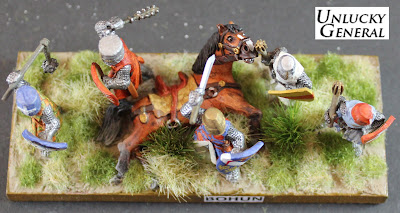TABLE-TOP: Building Part 4
I don't know what came over me this past weekend but I found my terrain building Mojo and just got stuck in. Having glued the synthetic fur to the polystyrene, I needed to trim the material back flush with the edges. As you can see, I brushed the fur into the centre of the boards before trimming to ensure the fur length right up to the edges - I deemed this especially important for internal edges. Once that was done, there was no reason to put off giving the terrain it's hair-cut.
I trimmed those areas of intense habitation or use right down to the base - that being the rise where the furthest extent of Lewes township appears and the site of the windmill. I began by using a Breville brand electric hair clippers but after some time realised that the hair care scissors which came with the kit was far quicker and more effective at getting straight to the base. I finished off with the clippers though.
 |
| Pathways and habitation areas marked by brushing before trimming |
Once the paths were cleared, I looked to trim back those areas most likely to be grazed upon the most. Lewes today still has sheep on it and of course the grassland or pasture needed to be trimmed back accordingly. I selected an extent which reached from the Lewes base line up to the path and contours ending at the windmill level. I took the pasture across the intersection with the upland pathway up to the natural rise which forms the spur running down toward the right side of the town. I ceased trimming on the rise of that spur as the other side is where the marshland commences and my terrain will reflect the habit of Lewes cow-herds corralling their beasts away from the dangerous bogs and sink holes over the other side of the spur line.
 |
| Grazed pasture either side of the track |
 |
| Trusty dog brush - invaluable tool |
Now all I have to do is find all those photos I took of Lewes Downs to get my colour schemes before the next step - the spraying.




Comments
cheers
Matt